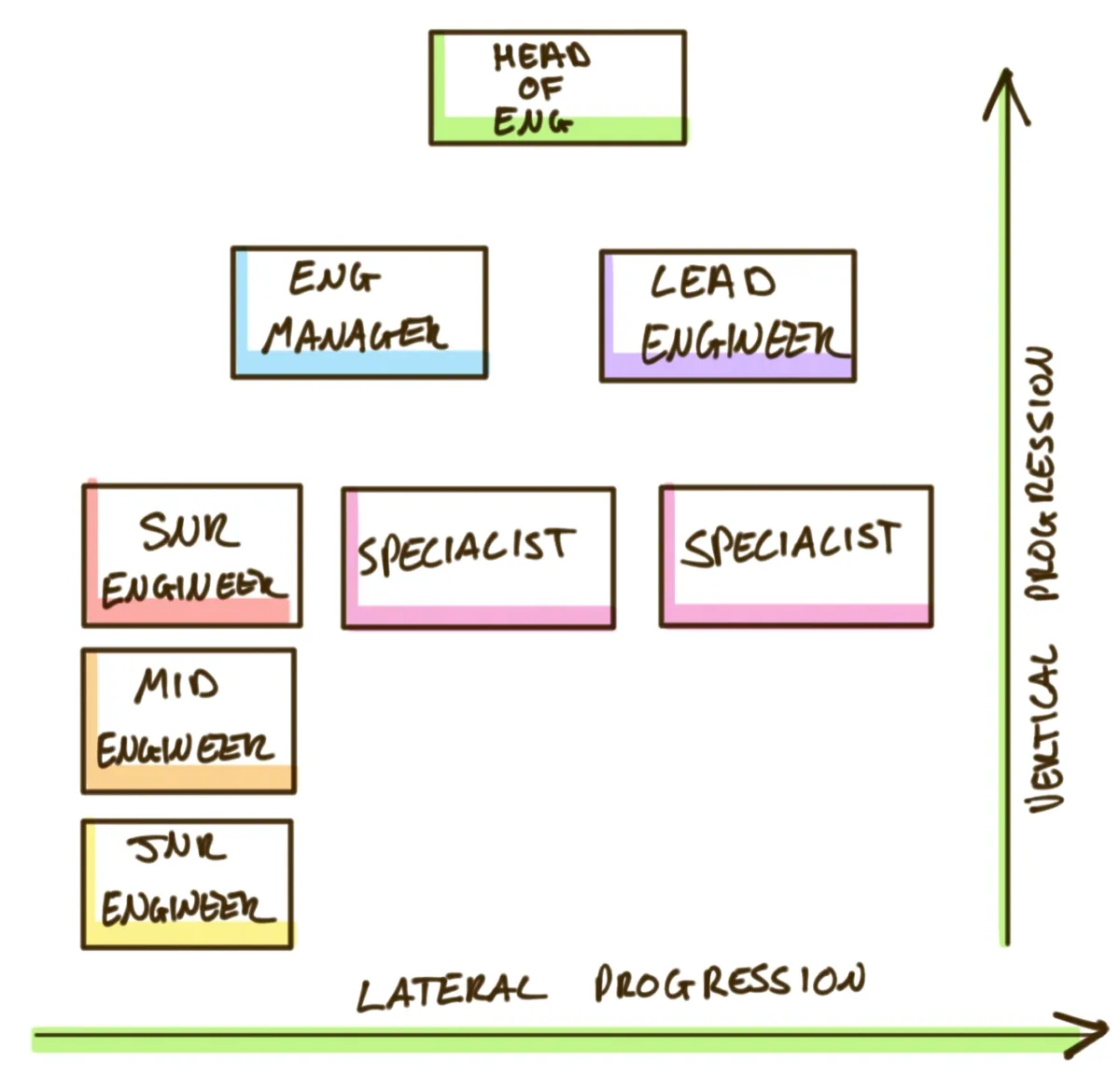Structuring a small engineering team can be a tricky, as it requires finding the right balance between providing support for team members to succeed in their roles and the realities of supporting the business goals. Lets explore some of the common challenges that come with managing a small engineering team and propose some solutions which I have used in the past.
Providing career pathways for everyone in the team is a challenge in small teams. Not everyone can be a manager or leader, and if an engineer wants to move into a leadership position, it often means waiting for someone to move on from the company. This can create frustration and lead to high turnover rates, which can be detrimental to the team’s productivity and morale.
Providing mentorship and guidance to support career/knowledge growth can be particularly tricky for small teams because doing so without adding a huge amount of work for the leadership. It requires finding the right balance between providing support and empowering team members to take ownership of their work.
Having the right kind of leadership structure in place is key to solving these challenges. The engineering leadership need to provide mentorship and maintain a deep knowledge of the technical stack. They are not an oracle with all the answers of course, but they know who to ask. They need to be good communicators and be able to provide feedback to team members in a constructive way.
The engineering leadership should also act as the conduit between the engineering team and the rest of the business team. They should be able to evaluate priorities and manage expectations to ensure that the team can focus on delivering high-quality work without being distracted by other demands.
Providing both lateral and vertical career progression is key. Lateral career progression provides career pathways to specialise in specific technologies. Engineers can become subject matter experts, beyond simple backend or frontend designations. For example, you might have the ads specialist, the analytics specialist, or the Salesforce specialist.
Vertical career progression is still available, but not everyone can be a leader or in management. Vertical career progression can be available to everyone via seniority. Leadership positions are available, but not everyone can be a leader or in management. However, there should be other opportunities for growth and development, such as taking on more complex projects or leading cross-functional teams. Team members should be able to progress themselves from a junior level to a senior level over time.
The diagram below is a blueprint that can be used as a general structure for a team. In reality each team will be structured a differently to meet all of the teams goals but this is a starting point for creating a supportive and productive environment for a small engineering team.

This structure does have its limitations, which you should keep in mind. If your team has multiple technology stacks or products, it can make sense to break this structure down further. It can make sense to have different squads, which are more focussed teams. It all depends on your exact situation. Of course, at some point, the team size can outgrow this structure and it will require some rethinking.
In conclusion, structuring a small engineering team can be a difficult task, but it is possible to create a supportive and productive environment with the right kind of leadership structure and career progression paths. Providing clear paths for growth and development, both laterally and vertically, is key to keeping team members engaged and motivated. It is crucial for engineering leadership to provide mentorship, and act as a conduit between the engineering team and the rest of the business team. By striking the right balance between support and empowerment, small engineering teams can thrive and deliver high-quality work and be satisfied in their work.


